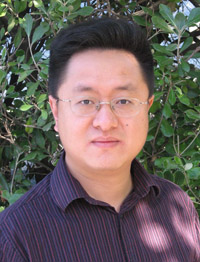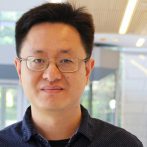
Leading nanotechnology journal ACS Nano has selected two research papers authored by Xiaogan Liang, Assistant Professor of Mechanical Engineering, and his lab group.
This will mark both the third and fourth pieces of Liang’s work that have been included in this journal since Liang came to UM. ACS Nano features cutting-edge research and connects scientists from around the world by generating conversation in the field of nanotechnology and nanoscience.
The two most recent papers, both published in 2014, are relevant to one another and address a popular topic currently of concern to engineers. The two articles are “Enhancement of Photovoltaic Response in Multilayer MoS2 Induced by Plasma Doping” and “Multibit Data Storage States Formed in Plasma-Treated MoS2 Transistors.”
Liang’s students were studying the plasma processes for altering the properties of 2D layered materials such as MoS2 and graphene when they came across an unexpected discovery. They realized that the plasma process has the potential to modify the electronic and optoelectronic properties of the 2D layered materials. These alterations can lead to more efficient electronic and optoelectronic devices by heightening performance and reducing cost.
The two articles explain why multi-bit flash memory transistors are less expensive than the more traditional solid state drives. Additionally, they demonstrate ultra-thin solar cells’ ability to potentially evolve into flexible solar cells that are also less expensive than the status quo Si-based ones.
Liang heads the NanoEngineering and NanoDevice Laboratory at the University. The articles can be found at http://pubs.acs.org/doi/abs/10.1021/nn5013429 and http://pubs.acs.org/doi/abs/10.1021/nn501181t.
